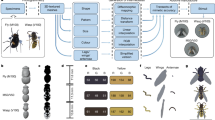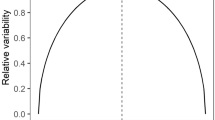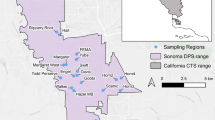Abstract
THE aposematically coloured eft stage of the red spotted newt, Notophthalmus viridescens viridescens, is both toxic and noxious to potential predators. The black chinned red salamander, Pseudotriton ruber schencki, is the most common red-orange salamander other than eft N. v. viridescens in the vicinity of the Highlands Biological Station in North Carolina. This study provides experimental evidence that P. r. schencki is a Batesian mimic of N. v. viridescens.
This is a preview of subscription content, access via your institution
Access options
Subscribe to this journal
Receive 51 print issues and online access
$199.00 per year
only $3.90 per issue
Buy this article
- Purchase on SpringerLink
- Instant access to full article PDF
Prices may be subject to local taxes which are calculated during checkout
Similar content being viewed by others
References
Howard, R. R., and Brodie, jun., E. D., Amer. Zool., 10, 475 (1970).
Brower, J. V. Z., Evolution, 12, 32 (1958).
Author information
Authors and Affiliations
Rights and permissions
About this article
Cite this article
HOWARD, R., BRODIE, E. Experimental Study of Mimicry in Salamanders involving Notophthalmus viridescens viridescens and Pseudotriton ruber schencki. Nature 233, 277 (1971). https://doi.org/10.1038/233277a0
Received:
Revised:
Issue date:
DOI: https://doi.org/10.1038/233277a0



